This article was co-authored by Luba Lee, FNP-BC, MS. Luba Lee, FNP-BC is a Board-Certified Family Nurse Practitioner (FNP) and educator in Tennessee with over a decade of clinical experience. Luba has certifications in Pediatric Advanced Life Support (PALS), Emergency Medicine, Advanced Cardiac Life Support (ACLS), Team Building, and Critical Care Nursing. She received her Master of Science in Nursing (MSN) from the University of Tennessee in 2006.
There are 9 references cited in this article, which can be found at the bottom of the page.
This article has been viewed 94,671 times.
Occasional fainting or "syncope" episodes are a common medical problem with an estimated 20 to 50% of adults having experienced it at some point in their lives. Although it is sometimes used colloquially to indicate a general loss of consciousness, fainting is caused by a temporary decrease in blood flow to the brain and has a distinct set of signs and symptoms. Most causes of fainting are harmless, but it may also indicate an underlying serious medical issue. In many cases, injuries from falls are the biggest problem for people who experience syncope.[1] If you have recurring fainting episodes, it is important to learn how to react in time and fall safely.
Steps
Falling Safely
-
1Detect the early warning signs. When you faint, you lose consciousness and will not be able to do anything to help break your fall. Because of this, it's important to know what the prodromal stage or "presyncope" feels like. This will give you a few seconds to act. While not everyone experiences fainting episodes the same way, most people have some combination of the following:
-
2Buy yourself time with counter-pressure maneuvers. These are actions that increase your blood pressure, delaying and sometimes preventing syncope altogether.
- Cross your legs while tensing them along with your abdominal muscles.
- Clench an object with some give, such as a rubber ball, as hard as possible.
- Grip one hand with the other and tense your arms, moving them slowly away from your body.[4]
Advertisement -
3Get to safety. The most dangerous part of fainting is the possibility that you will injure yourself when you fall. Do your best to get away from high-risk areas and towards places where you are less likely to hurt yourself. You may be able to take just a few steps while experiencing presyncope, but that distance is often all you need to prevent injury.
- Some examples of high-risk areas include streets, train terminals, staircases, and anywhere with a nearby steep drop. Staircases pose a unique problem. If you are already standing on a staircase, do not try to go up or down, even if it's just a few steps. Instead, hold on to the railing and gently slide down to sit on the step you are currently standing on.
- Try to get to a better place to fall. If you are standing in an area that has hard flooring or furniture with sharp edges, try to get to an uncluttered space with either carpeting or grass. When you're feeling faint, ideally you should lie down on a couch or bed with your legs elevated.[5]
-
4Move towards someone who can catch you. When you lose consciousness, the people around you will be the ones who can make sure you stay safe. Even in an uncluttered area with soft flooring, your fall can still cause potential injury. If someone can catch you and lower you gently to the ground, your risk becomes greatly reduced.
- Try for someone you know. A stranger is less likely to catch you when you fall. Unfortunately, many people with fainting disorders are often misinterpreted as being under the influence of drugs or alcohol.[6]
- If you can still talk, try saying "Help!" or "I'm fainting!" This will alert people around you, who may be able to react in time to catch you.
-
5Fall onto a sofa or bed. If you are close to soft furniture, try to aim your fall so that your unconscious body will land on it lying down. Face towards the furniture and shift your weight forward. The couch or bed will give you a safe place for you to fall onto, preventing injury. Having your legs elevated will also help your blood get to your brain more easily, shortening the episode's length.
-
6Lean against a wall. If you are near a wall that doesn't have sharp-edged furniture nearby, try getting to it before you faint. Do not try to lean against a wall with outcroppings that you could hit your head on. It's best to lean with your back against the wall, but using your arms and chest will also work if you are unable to do so.[7]
-
7Slide slowly to the floor. From the leaning position, gradually bend your knees and slide to the ground. Once you get low to the ground, lean forward and stay in a squatting position or lie down. Either method will minimize injury while getting your blood pressure back to normal faster.[8]
-
8Wait until you feel completely better before trying to stand up again. Standing back up too quickly may cause you to faint again. Whether you actually lost consciousness or only experienced an episode of presyncope, do not try to stand up again until your symptoms have completely passed. This may take a few minutes.
- The exception to this rule is if your fainting was caused by immediate physical danger. If that's the case, try leaving the area as quickly as possible.
Preventing Falls
-
1Talk to a doctor. If you've fainted with no known cause, it is very important to see a physician about the problem. Your doctor will help you to find the cause of your fainting and hopefully rule out any serious heart or nervous system disorders. If the episodes are caused by an underlying medical issue, they may be treatable. Treatment may eliminate your fainting spells entirely.
-
2Discover and avoid your triggers. Your doctor may have diagnosed you with vasovagal syncope. This is the most common type of fainting, especially in otherwise healthy individuals. In vasovagal syncope, fainting is triggered by certain stimuli that vary from person to person.
- Think about what you were doing each time you either fainted or felt like you were about to faint.
- If your trigger is a situation you can avoid, such as dehydration or the sight of blood, try not to put yourself at risk again.
- If your trigger is something unavoidable, try to find a way to prevent the drop in blood pressure. Your doctor may have some solutions. For example, some people faint when having blood drawn. If this is your trigger, tell your phlebotomist. He or she will likely have a protocol to prevent fainting that likely includes some way of keeping your legs elevated.[9]
-
3Lie down if you can. When you encounter presyncope, attempt to lie down instead of falling. From a horizontal position, your body is better equipped to recover from fainting. Lying down makes it much easier for your heart to pump much-needed blood back to your head.[10]
-
4Elevate your legs if you can. Keeping your legs elevated is the easiest way to prevent blood from pooling in your feet, decreasing blood flow to your brain. This will shorten the fainting episode and possibly prevent it altogether.
- Sitting down with your head lowered between your knees will have the same effect.[11]
Expert Q&A
-
QuestionWhat if I feel faint while I'm in the garden?
 Luba Lee, FNP-BC, MSLuba Lee, FNP-BC is a Board-Certified Family Nurse Practitioner (FNP) and educator in Tennessee with over a decade of clinical experience. Luba has certifications in Pediatric Advanced Life Support (PALS), Emergency Medicine, Advanced Cardiac Life Support (ACLS), Team Building, and Critical Care Nursing. She received her Master of Science in Nursing (MSN) from the University of Tennessee in 2006.
Luba Lee, FNP-BC, MSLuba Lee, FNP-BC is a Board-Certified Family Nurse Practitioner (FNP) and educator in Tennessee with over a decade of clinical experience. Luba has certifications in Pediatric Advanced Life Support (PALS), Emergency Medicine, Advanced Cardiac Life Support (ACLS), Team Building, and Critical Care Nursing. She received her Master of Science in Nursing (MSN) from the University of Tennessee in 2006.
Board-Certified Family Nurse Practitioner Feeling faintness when gardening is common because you often change your positions abruptly from squatting to standing. Try to slow down when you change positions so that your blood pressure has some time to adjust. However, if you feel like you are about to faint, slowly lower yourself back to squatting and then try to sit down. You may eventually get yourself all the way to a horizontal position by lying down on the ground while waiting for the faintness to pass.
Feeling faintness when gardening is common because you often change your positions abruptly from squatting to standing. Try to slow down when you change positions so that your blood pressure has some time to adjust. However, if you feel like you are about to faint, slowly lower yourself back to squatting and then try to sit down. You may eventually get yourself all the way to a horizontal position by lying down on the ground while waiting for the faintness to pass.
References
- ↑ http://www.aafp.org/afp/2005/1015/p1492.html
- ↑ http://www.aafp.org/afp/2005/1015/p1492.html
- ↑ http://www.nhs.uk/Conditions/Fainting/Pages/Symptoms.aspx
- ↑ http://www.uptodate.com/contents/syncope-fainting-beyond-the-basics
- ↑ http://www.uptodate.com/contents/syncope-fainting-beyond-the-basics
- ↑ http://www.express.co.uk/news/uk/474561/Teenager-with-rare-fainting-disorder-sick-of-being-mistaken-for-a-DRUNK
- ↑ http://www.newhealthadvisor.com/How-to-Make-Yourself-Pass-Out.html
- ↑ http://www.health.harvard.edu/family_health_guide/when-the-lights-suddenly-go-out
- ↑ http://www.uptodate.com/contents/syncope-fainting-beyond-the-basics
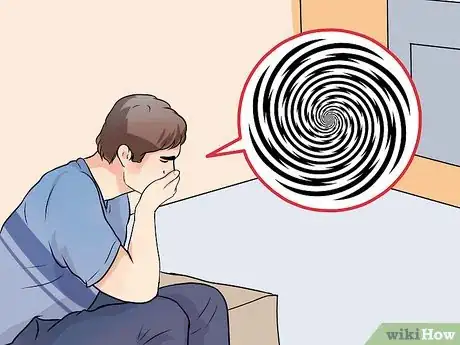
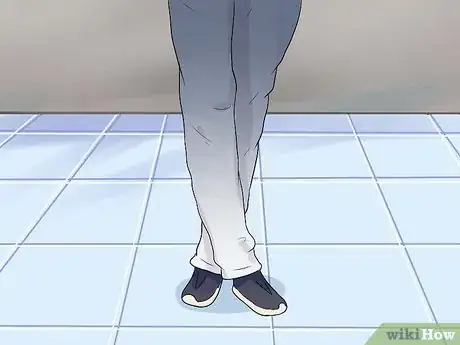
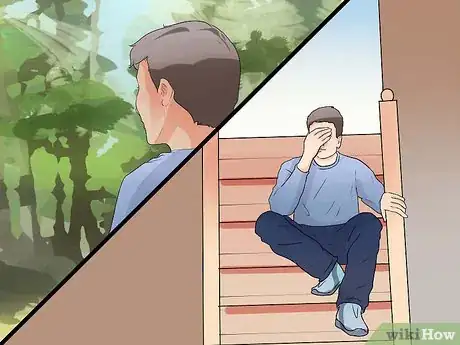






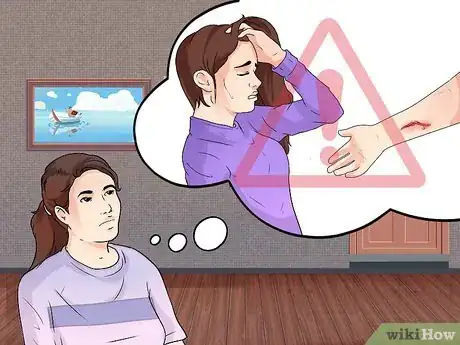


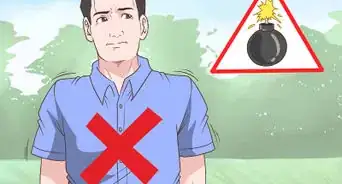
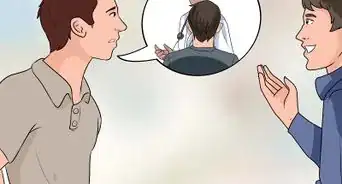


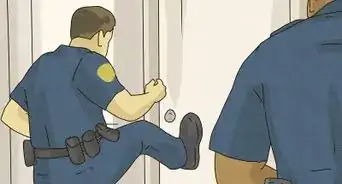
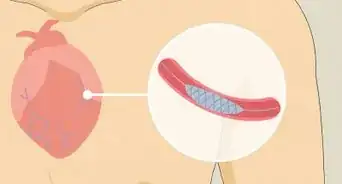


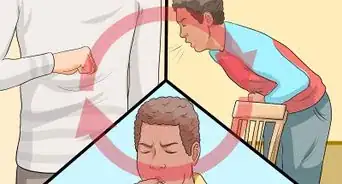


















































Medical Disclaimer
The content of this article is not intended to be a substitute for professional medical advice, examination, diagnosis, or treatment. You should always contact your doctor or other qualified healthcare professional before starting, changing, or stopping any kind of health treatment.
Read More...